Cricket
Here’s how Bihar won the Ranji Plate title.
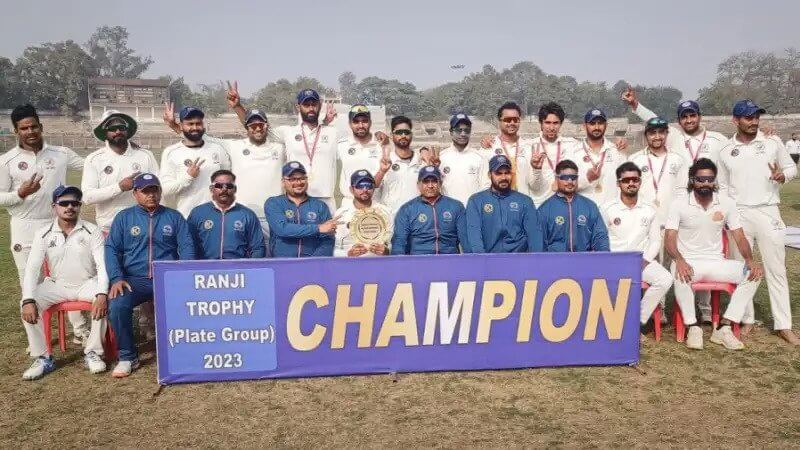
The happiness that is currently filling Pawan Kumar’s heart as head coach of Bihar is without boundaries.
Pawan, who coached the team to victory in the Ranji Trophy Plate final and led them to qualification for the Elite Group for the following season, credited “the whole of Bihar” for the victory over Manipur, which was achieved by a score of 220 runs.
Bihar was able to advance to the championship match despite the fact that they won just one of their five group matches. It was beneficial for them to win the bonus point against Arunachal Pradesh, in addition to having first-innings leads in two out of the three games that ended in a draw. In the first season of the Ranji Trophy with separate winners for the Plate and Elite divisions, the Plate group consisted of only six teams, four of which advanced to the semi-finals. The format was also very forgiving.
Ashutosh Aman, the captain of the Bihar team, stated that the current format presented them with the perfect opportunity to compete in the Elite Group. “Throughout this entire process, we had been making significant efforts to advance [for qualification], but for some reason, it had never worked out.”
Despite winning six of their eight games in the group stage during their first season of competition in 2018-19, Bihar was eliminated in the round of 16 due to a five-point deficit. The following year was not nearly as successful; three victories out of nine simply did not cut it. Even after the pandemic had passed and the Ranji Trophy competition had resumed in 2021-22, they finished fifth out of the six teams competing in the Plate Group.
When Pawan was given the position of head coach of the Bihar team at the beginning of this season, he came in with a single objective in mind. He said, “From the day that I became head coach, I had decided something that I never shared with anyone: that anyhow we had to reach the Elite Group.” “From the day that I became head coach, I had decided something which I never shared with anyone.” However, why didn’t he make his ambitions known to the players he was coaching? In order to avoid putting undue stress on a group of boys who lacked experience, he advised against it.
“Whenever we had team meetings, all I could think about was trying to persuade the players that there is no logical reason why we shouldn’t be in the Elite Group. That, in my opinion, gave them more leeway to play, which in turn contributed to our successful performance.
During the group stages, not only did Bihar have to overcome their lack of experience, but they also had to play in a variety of extremely challenging environments. They travelled from the relatively cool climate of Patna to the sweltering heat of Ahmedabad, then continued on to the chilly, mountainous climate of Shillong before heading back to Patna. Nadiad, yet another sweltering town, served as the destination at the end of their rocky and bumpy journey.
Although Bihar’s only loss of the season came against Meghalaya in the frigid conditions of Shillong, the team still managed to score enough points to take the lead after the first innings.
“I believe the weather played a role in that match, as it was extremely cold,” said Pawan. “I think the weather played a role in that match.” “I believe that our boys had difficulty because they are not accustomed to doing so.
“There were times when even the pitches weren’t helpful; for example, the ones in Ahmedabad and Nadiad were completely lifeless tracks, making it extremely challenging to take wickets. However, I believe that we performed very well when it was most important.
Bihar had a record of one loss and three draws going into the semi-finals, but they came out strong as a team in the knockout stage: wicketkeeper Bipin Saurabh smashed 177 off 183 balls, Sachin Kumar Singh hit 75 in quick time, and left-arm spinner Aman led with figures of 4 for 21 and 4 for 35.
“When I’m bowling, my only thought is to contribute with wickets,” Aman said. “I try to strike a balance between my responsibilities as a bowler and as a captain.” “But when I’m not in the mood for it, that’s when I try to motivate and push other people to perform,” she said.
Aman also had a very high opinion of Saurabh, who had a powerful hitting style that made Pawan think of Virender Sehwag. “He is the most fascinating person. “There’s a chance he’ll even play in the IPL soon,” Aman told me. “No one else on our side can hit sixes as consistently as he can.”
Pawan also had very high praise for Sakibul Gani, who scored 205 in the final despite having thrown away numerous starts throughout the season. Pawan praised Sakibul Gani for his resilience. Gani was the top run-scorer for Bihar with 585 runs, and he also contributed scores of 43 and 39 in the semi-final. Pawan said that Gani’s patience and application had helped Bihar “hold one end up.”
Gani, Sachin, and Saurabh all had batting averages of at least 47, and Sachin was the only one of the three to score more than 562 runs for Bihar. Sachin also took 20 wickets for the team. Saurabh scored three centuries. Veer Pratap Singh, a bowler with a medium pace who moved from Bengal to Chattisgarh and then Bihar prior to the start of this season, was also a member of this team.
Aman was the one who persuaded Veer Pratap to sign with Bihar. Prior to the start of this season, Veer Pratap had 82 wickets in 32 first-class games. Aman remarked that the presence of his “old friend” in the dressing room provided a sense of ease.
He told me, “Veer had spoken to me before coming [to Bihar].” “I had encouraged him to take the step forward because I knew that his experience with Bengal and in the IPL would have been beneficial to us,” she said. “I knew that his experience with Bengal and in the IPL would have helped us.” He never fails to instruct us on how to respond appropriately to a variety of circumstances.
Pawan described the presence of Veer Pratap as becoming more “crucial” now that Bihar has been promoted to the Elite Group, which is the level at which the two of them used to compete. “They say that in order to keep things tight, you need an elderly person at home, and that is exactly what Veer was. He brought with him a great deal of experience, which helped shape the mindset of our players.
“Sachin’s game was particularly impacted by his company, as he kept contributing with bat and ball, and he kept chatting to them about what he learned over time,” he said. “He kept chatting to them about what he learned over time.” Sachin was able to advance his game and he scored a century in the final as well.
Aman was Bihar’s leading wicket-taker this season with 28 scalps at 21.25, while Veer Pratap only took 16. The captain of Bihar made the most of his opportunities after not getting enough with Services in the previous chapter of his career.
Aman responded, “It’s like returning home for me.” when he was asked how he felt about making it back to the Elite Group after a long absence. The road ahead for Bihar is going to be much more challenging next season, but the potential rewards are going to be much greater. Bihar already has the Plate title in the bag.
Cricket
1000 Runs in ODIs: Kohli’s Cricket Legacy
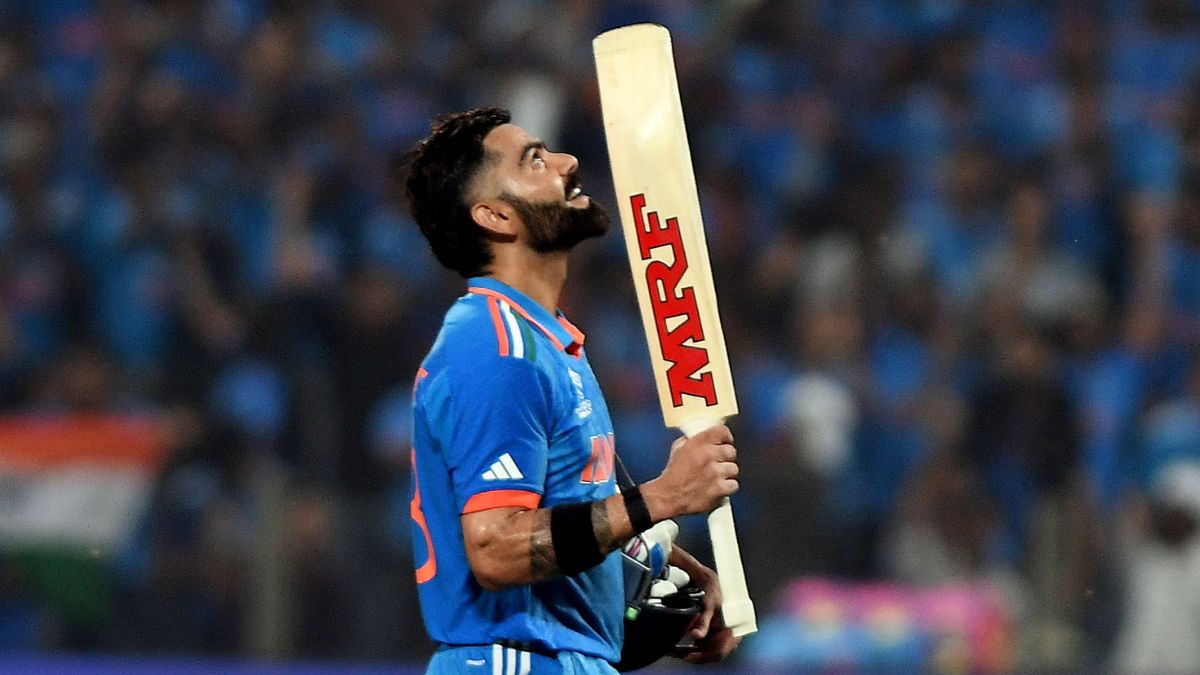
On Thursday, November 2, Virat Kohli achieved an accomplishment. He became the batsman to surpass 1000 runs in ODIs in 2023, following in the footsteps of Shubman Gill and Rohit Sharma. Not that,. He also joined Rohit Sharma, Shubman Gill, and Pathum Nissanka as the fourth players to achieve this impressive record in the 50-over format within the same year.
Stepping into History with 1000 Runs in ODIs
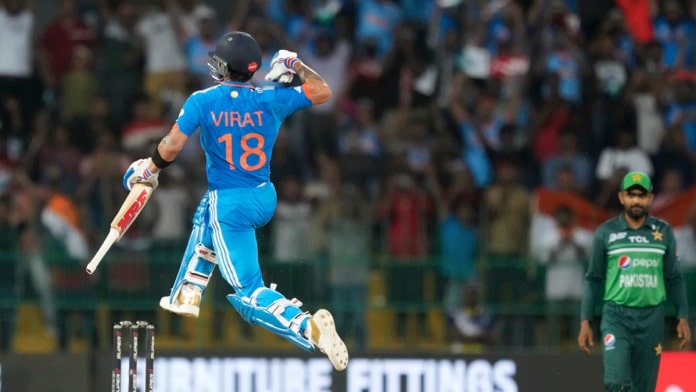
Entering the realm of history, Kohli’s unwavering determination and exceptional skills were put on display during his match in 2023. Notably, the cricket maestro, now 34 years old, made an indelible impact by surpassing Sachin Tendulkar‘s record, securing the most number of years with 1000 runs in ODIs. Kohli’s consistent ability to perform at such an exceptional level has been a defining characteristic of his illustrious career, as he had previously achieved this monumental milestone in 2011, 2012, 2013, 2014, 2017, 2018, and 2019, before accomplishing it once again in the present year of 2023.
Sachin Tendulkar with god of cricket Virat Kohli pic.twitter.com/zmztejNBBB
— Kevin (@imkevin149) November 2, 2023
An Unforgettable Journey
In an intense World Cup 2023 clash against Sri Lanka at the renowned Wankhede Stadium in Mumbai, Virat Kohli’s pursuit of this historic milestone was realized with an impressive 34 runs. Despite facing challenges, including a rare duck against England at the Ekana Stadium in Lucknow, his overall performance throughout the year has been nothing short of spectacular.
Kohli’s memorable journey was highlighted by an unbeaten century during India’s triumphant seven-wicket victory against Bangladesh at the Maharashtra Cricket Association (MCA) Stadium in Pune. Adding to his illustrious record, he solidified his stature with a brilliant 95 runs, making a significant contribution to India’s thrilling four-wicket win over New Zealand led by Tom Latham at the Himachal Pradesh Cricket Association (HPCA) Stadium in Pune.
Cricket
Shaheen Shah Afridi: Fastest to 100 ODI Wickets

Shaheen Shah Afridi, on Tuesday, October 31, achieved a remarkable feat, becoming the third fastest bowler to secure 100 wickets in ODIs. His outstanding performance during Pakistan’s World Cup 2023 match against Bangladesh at the renowned Eden Gardens in Kolkata led to this historic accomplishment.
A Landmark Moment
In the thrilling encounter, Shaheen clinched his 100th wicket in only his 51st match, dismissing Tigers’ opening batter Tanzid Hasan Tamim. The left-arm fast bowler displayed exceptional skill as he struck Tamim on the pads, prompting the on-field umpire to raise his finger. Despite Tamim’s referral to the third umpire using the Decision Review System (DRS), the replays confirmed the ball crashing into the stumps, upholding the on-field decision. Bangladesh lost their first wicket with the scoreboard reading 0 in just 0.5 overs.
Shaheen Afridi soars high yet again with another feat to his name 🦅#CWC23 | #PAKvBAN pic.twitter.com/IlQQ6P5xYK
— ICC Cricket World Cup (@cricketworldcup) October 31, 2023
Surpassing Preceding Records
Shaheen Shah Afridi not only secured this feat in record time but also outshone the accomplishments of esteemed bowlers preceding him. He surpassed the record of the fastest pacer, previously held by Mitchell Starc, who attained the milestone in August 2016 during an ODI against Sri Lanka at the R. Premadasa Stadium in Colombo.

Legacy of Excellence
Moreover, Shaheen shattered the long-standing record held by Saqlain Mushtaq, becoming the fastest Pakistani bowler to claim 100 wickets in ODIs. Saqlain had set this record on May 12, 1997, during an ODI against Sri Lanka in Gwalior. It is notable that among the Pakistani fast bowlers, the accomplished Shaheen Shah Afridi follows in the footsteps of the legendary Waqar Younis, who achieved the 100-wicket mark back in February 1993 against Zimbabwe in Sharjah.

Beyond ODIs
Demonstrating his prowess beyond ODIs, Shaheen has made significant contributions in Tests and T20Is as well. Since his debut in 2018, he has garnered 105 wickets in Tests and 64 wickets in T20Is. His exceptional journey began with a strong performance in the U19 World Cup in New Zealand. Notably, he played a pivotal role in Lahore Qalandars’ consecutive victories in the Pakistan Super League (PSL).
A Testament to Talent and Dedication
Shaheen Shah Afridi’s rapid rise to 100 ODI wickets within 51 matches underlines his exceptional talent and unwavering dedication to the sport. As he continues to leave an indelible mark on the cricketing world, his journey serves as an inspiration for aspiring cricketers worldwide. With his remarkable achievements, Afridi has solidified his place in the annals of cricket history, etching his name as one of Pakistan’s most formidable and promising fast bowlers.
Cricket
ICC World Cup: Shoaib Akhtar says, ‘Mai India ki tareef kyu na karu’

Former Pakistan fast bowler Shoaib Akhtar has recently expressed admiration for India’s dominant performance in the ongoing 2023 ICC World Cup. With India securing victories in all six matches, Akhtar highlighted the team’s exceptional display across various aspects of the game. Although the recent batting performance against England in Lucknow was relatively modest, India’s fierce bowling attack, led by Mohammed Shami and Jasprit Bumrah, proved instrumental in securing a remarkable win. This triumph not only solidified India’s leading position on the points table but also exacerbated England’s struggles in the tournament, leaving them virtually eliminated.
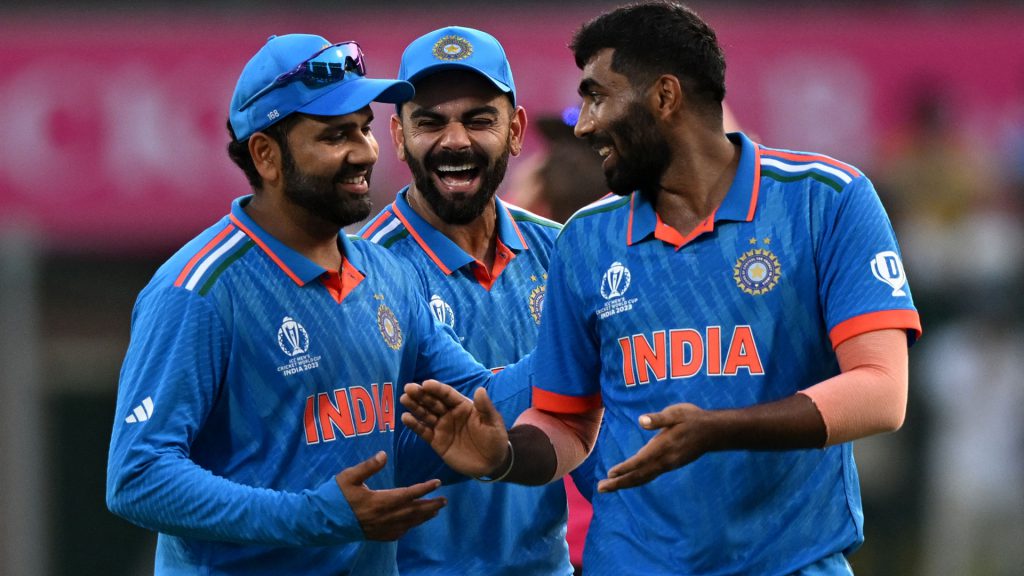
India’s Remarkable Bowling Transformation
In his analysis, Akhtar emphasized the transformative impact of Shami’s inclusion in India’s playing eleven following Hardik Pandya’s injury. Acknowledging Shami’s outstanding performances against New Zealand and England, Akhtar credited India’s ability to win matches through their bowling prowess, showcasing a shift from their traditional reliance on batting strength. He commended the collective effort of the Indian bowling unit, particularly recognizing the strategic brilliance of fast bowler Bumrah.
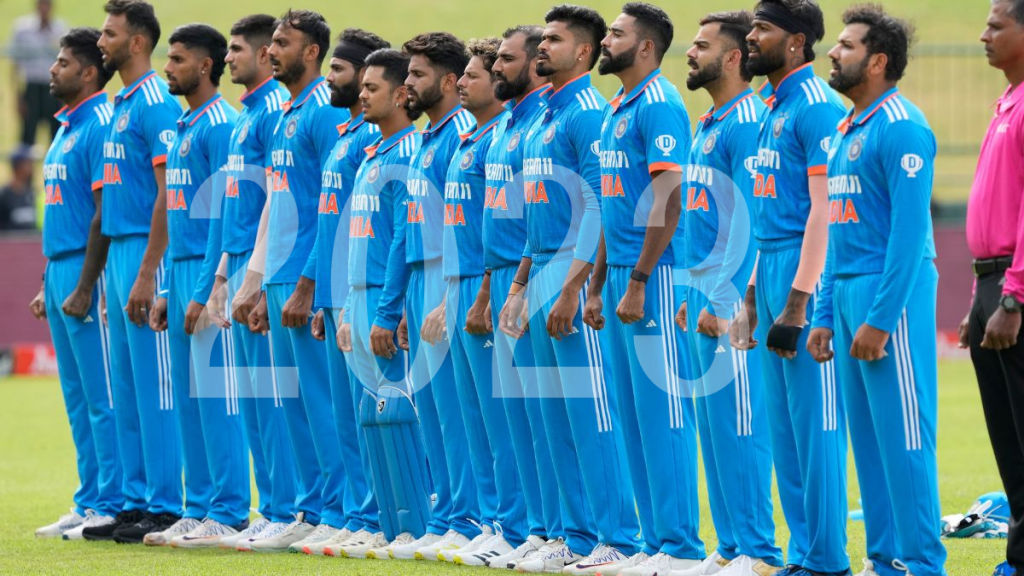
India’s Path to World Cup Glory
Looking ahead, Akhtar voiced his confidence in India’s potential to secure their third ODI World Cup trophy, highlighting the team’s upcoming matches against Sri Lanka, South Africa, and the Netherlands. Expressing optimism, he emphasized the significance of maintaining their unbeaten streak en route to the final, setting the stage for a potential historic ICC World Cup victory. However, Akhtar cautioned against compromising the successful bowling unit once Pandya returns to full fitness, warning against the potential detriment of a partially fit Pandya’s inclusion at the expense of a bowler.
Akhtar’s Praise for India and its Response to Criticism
Addressing skepticism surrounding his praise for the Indian team, Akhtar reiterated the exceptional nature of India’s performance, particularly in their ability to defend a modest total with a significant margin of victory. Undeterred by criticism, Akhtar reaffirmed his admiration for India’s exceptional cricketing prowess, urging acknowledgment and appreciation of their commendable achievements.
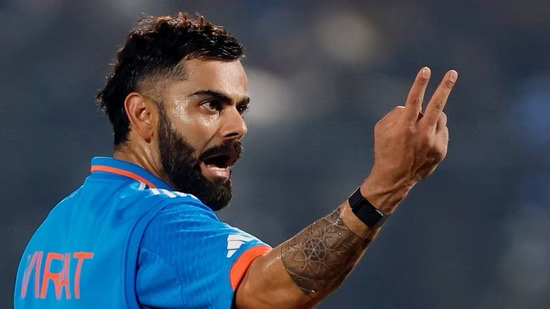
Shoaib Akhtar’s Perspective on Virat Kohli
Shifting focus, Akhtar’s history of praise extends beyond team performances to individual players, notably including former Indian team captain Virat Kohli. Reminiscing on Kohli’s resilience during a challenging phase in his career, Akhtar highlighted the pivotal role played by Kohli’s consistent century-scoring performances, leading to India’s victories. Recognizing Kohli’s contribution to the team’s success, Akhtar emphasized the significance of Kohli’s monumental centuries during crucial chases, solidifying his status as a crucial asset for the Indian cricket team.
In a comparison between Kohli and the legendary Sachin Tendulkar, Akhtar acknowledged Tendulkar’s status as one of the greatest batsmen while highlighting the challenges Tendulkar faced as a captain. Drawing parallels, Akhtar expressed confidence in Kohli’s eventual resurgence, expecting him to return to his prolific scoring form once he finds his equilibrium.
In summary, Akhtar’s acknowledgment of India’s exceptional performance and his recognition of individual players’ contributions underscore the team’s formidable presence in the 2023 ICC World Cup, setting the stage for a potential historic triumph in the coming days.







You must be logged in to post a comment Login